English Renaissance literature
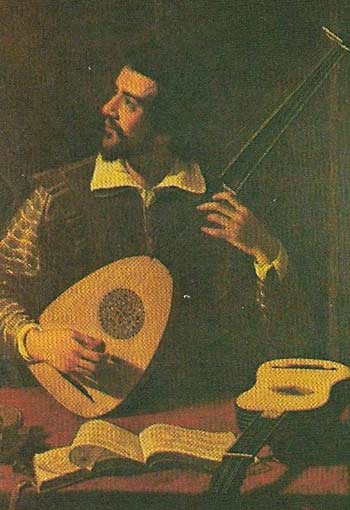
Figure 1. The lute, a stringed instrument played by plucking with the fingers, characterized music of Elizabethan times, and English lutes were prized throughout Europe. Because singing was such a favorite entertainment at court, a normal gentlemanly accomplishment was the ability both to write his own songs – including lyrics – and to perform them to the accompaniment of his own lute.
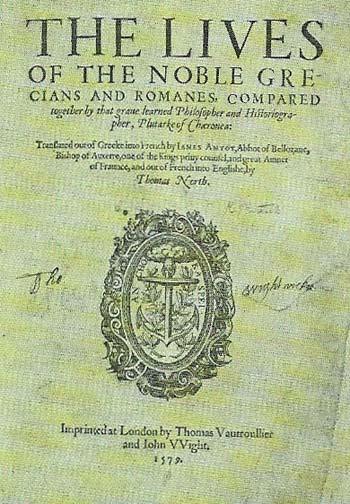
Figure 2. Plutarch's Lives was translated into English in 1579 by Thomas North (the frontispiece is shown here). It provided one of the main sources for plot and character in the Roman plays of Shakespeare.
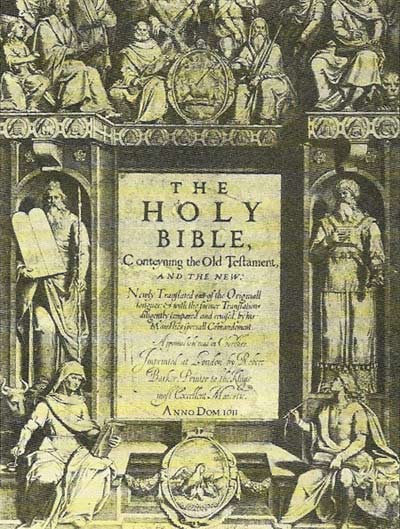
Figure 3. The authorized King James Version of the Bible, based on earlier work by William Tyndale and Miles Coverdale, was produced in 1611. It is one of the great monuments of English literature in itself.
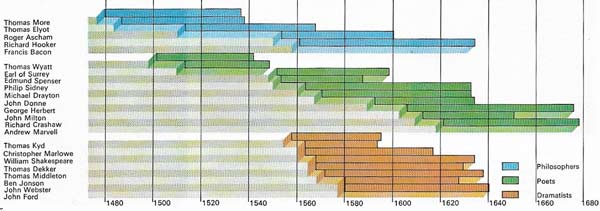
Figure 4. This chronological diagram shows the development of various forms of writing in the golden age of English literature that embraced the Tudor and Stuart periods. The interpreters of the new learning of the Italian Renaissance predated the dramatists and poets but all three reached a peak in the late Elizabethan period, which was sustained throughout the 1600s. Drama's achievements were most concentrated in time – between 1560 and the Civil War.
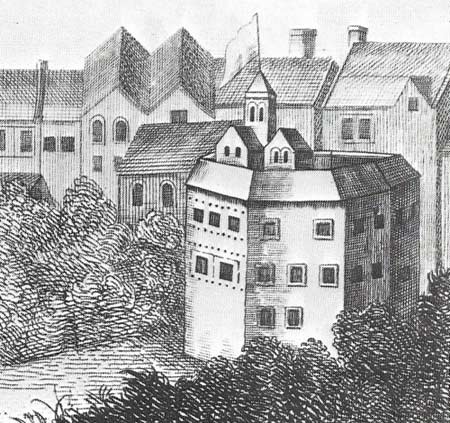
Figure 5. The Globe theatre was probably the largest in London in the late sixteenth and early seventeenth centuries, it was the golden age of English popular drama; the theatres, in total, attracted an estimated weekly audience of 21,000. The audiences consisted of ordinary people in the "pit" while the wealthy sat in the "orchestra". A protruding stage brought the audience into intimate contact with the action, scenery was scant, though, and effects relied on imagination and context.
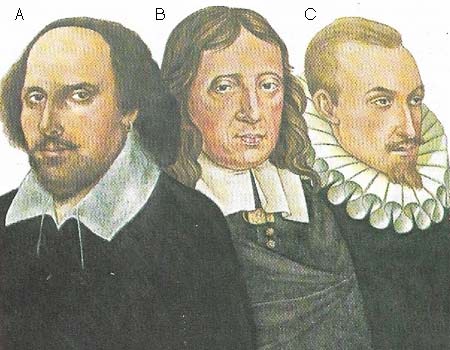
Figure 6. The greatest figures of English Renaissance literature were William Shakespeare (1564–1616) (A), John Milton (1608–1674) (B) and Edmund Spenser (1552–1599) (C). Spenser wrote mainly lyric poetry in a sensuous style; Shakespeare is the greatest verse dramatist in English history; and Milton stands as the unrivalled master of English epic poetry.
The new learning of Italy in the fifteenth century rapidly spread northwards and was promoted in England by the so-called "Oxford reformers", the humanist scholars John Colet (c. 1467–1519), William Grocyn (c. 1446–1519) and Thomas Linacre (c. 1460–1524). Traditional learning had undergone a change of purpose: it was no longer primarily aimed at elucidating the truths of the scriptures but, through the study of classical philosophy and history, at training future leaders in the arts of government. This reorientation was first summarized in The Book Named the Governor (1531) by Thomas Elyot (c. 1499–1546).
Translations from the classics
The new learning also promoted a great output of original works in Latin – from Utopia (1516) by Thomas More (c. 1478–1535), a tract on ideal politics and government, to Novum Organum (1620) on the ideal of education by Francis Bacon (1561–1626). Scholarly writing in Latin reached only a small audience and therefore translations from the classics, such as Thomas North's version of Plutarch's Lives (1579) (Figure 2), became common.
Imitation, although not in the sense of slavish debasement, was another important aspect of the literature of the century. The brilliance of the Italians Francesco Petrarch (1304–1374), Giovanni Boccaccio (1313–1375), Ludovico Ariosto (1474–1533), and, later, Torquato Tasso (1544–1595), was quickly taken as a model; Thomas Wyatt (c. 1503–1542) and the Earl of Surrey (c. 1517–1547) both distinguished themselves in their sonnets based on the pattern devised by Petrarch. It was the beginning of a great age of English poetry that continued through Spenser, Sidney and Shakespeare to the 17th-century poets Robert Herrick (1591–1674), Richard Lovelace (1618–1657), Andrew Marvell (1621–1678), John Donne, and John Milton.
All kinds of poetry were produced during this extraordinary period – from the long romances such as Spenser's The Faerie Queen (1589–1596) and the great epic Paradise Lost (1667) by Milton, to brief, gem-like lyrics from French and Italian models that were intended to be sung (Figure 1). The greatest poets of Elizabeth's reign were Edmund Spenser and Philip Sidney (1554–1586), whose collection of sonnets Astrophel and Stella shows great mastery of the Petrarchan form. Spenser's main work, The Faerie Queen, was a long romance with allegorical overtones.
During this period there were also many anthologies such as Tottel's Miscellany, The Paradise of Dainty Devices, and song books compiled by eminent musicians such as William Byrd (1543–1623) and Thomas Morley (c. 1557–1603).
In drama the revival of Greek and Latin learning introduced new classical elements. The old morality play had culminated in the plays of Christopher Marlowe (1564–1593), whose three great tragedies, Tamburlaine the Great, Doctor Faustus, and The Jew of Malta, are studies of heroic power and the vices that such power brings with it.
The Senecan influence
With the new learning, the Latin playwright Seneca (c. 4 BC–AD 65) became a favorite model for tragedy. Here were introduced the themes of vengeance and retribution, with accompanying horror and violence; also stage mechanics to provide surprises.
The earliest English tragedy in the manner of Seneca was Gorboduc (1561) by Thomas Norton (1532–1584) and Thomas Sackville (1536–1608). It started a tradition that culminated in The Spanish Tragedy (1592) by Thomas Kyd (1558–1594), in which the Senecan elements are enlivened by a modern setting, stage devices and highly individualistic characters. In comedy the Latin influence of Plautus and Terence was of the greatest importance, as can be seen in two of the best early plays, Ralph Roister Doister (c. 1553) by Nicholas Udall (c. 1505–1556) and Gammer Gurton's Needle (1575) by William Stevenson (died 1575).
English Renaissance literature is dominated by William Shakespeare. His earlier plays are adaptations of models in vogue; later comedies show a greater complexity in character and plot, as do the cycles dealing with kingship. Then come the great tragedies, followed by the very complex Cymbeline, The Tempest, and The Winter's Tale.
Shakespeare's great successor was Ben Jonson (c. 1572–1637), who developed a series of characters of outstanding force, especially in Volpone (1607). He also exploited the masque, which incorporated mythology, courtly life, folklore and satire. In purely literary terms the masque found its highest expression in Milton's Comus.
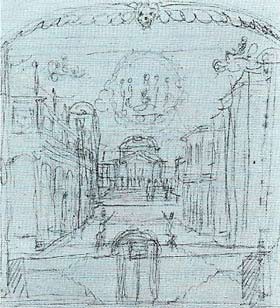 |
| The Masque of the Augurs was designed and the sets built in 1622 by Inigo Jones (1573–1652). The masque shows the intimacy between architecture, theatre and music. It was an aristocratic, exclusive and purely courtly art, often containing disguised political references. The masque was of Italian origin and was an ancestor of modern opera. Even though pageants were not written dramas they have been recorded in designs, drawings and music. |
The Metaphysical poets
The group of poets who flourished in the first half of the seventeenth century are known as the Metaphysical poets. Their language was complex and double-edged; their subject-matter contained the pious, the amorous and the reflective. They included Herrick, Lovelace, Marvell, and Donne.
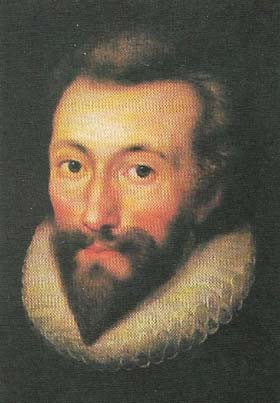 |
| John Donne (1572–1631) was the most famous 17th-century Metaphysical poet. He was a soldier, courtier, noted lover, preacher of distinction and later dean of St Paul's. A passionate sensualist, his use of language was refined, philosophical and complex. A world of emotion was pared down and paralleled in images that have the most reflective of origins. Rich in both passion and cynical humor, there remains a basic piety: "Nor thou nor thy religion dost controule,/ The amouresnesse of an harmonious Soule,/ But thou would'st have that love thy selfe: As thou / Art jealous now,/ Thou lov'st not till from loving more, thou free / My soule…". |
John Milton (Figure 6) was the greatest poet of the 17th century and his masterpiece was the epic Paradise Lost. Divinity, the moral and theological concern of the Church, was thus once again in the forefront of English writing. But from now on it was to be tempered by the study of man's character in his own right not merely as the creation of an almighty God.
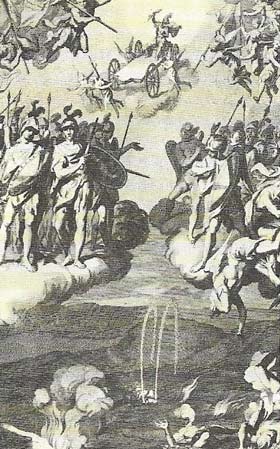 |
| "The Battle of the Angels", from an edition of Milton's Paradise lost, reflects his interpretation of life as a struggle between the forces of good and evil that goes back to the first catastrophic fall of the rebel angels. Milton's interpretation was probably fostered by his experience as a supporter of Cromwell in the Civil War. His struggle was permanent and intense for a man as aware of the attractions of life and nature as was a Milton, and he evoked the conflict in language that is at the same time exalted, heroic and yet direct: "A dungeon horrible, on all sides round / As one great Furnace flam'd, yet from those flames / No light, but rather darkness visible / Served only to discover signs of woe…". |
